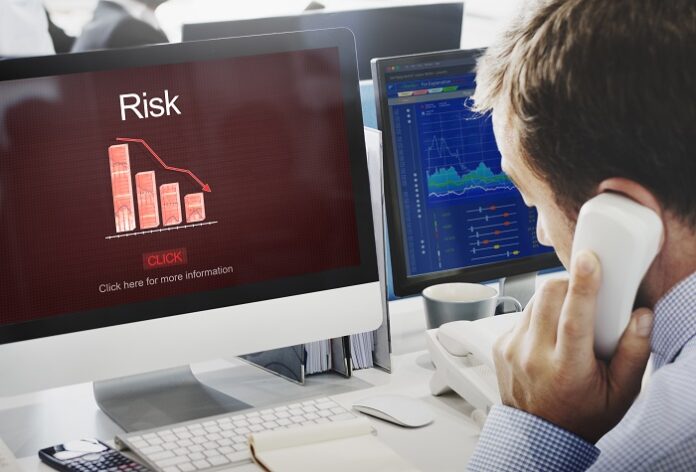Every investment involves risk. Therefore, before entering into a trade, it’s important to understand the risk to reward ratio. This is a measure that indicates the potential profit for every dollar a trader risks when opening a position. If the returns from a trade significantly outweigh the risk, and indicators suggest that it’s an optimal moment for trading, you make an informed decision, which is more likely to pay off. R/R trading is not a standalone strategy but rather an additional factor to consider when you have doubts.
There are no difficulties in learning how to calculate reward to risk ratio. It’s the ratio between the potential loss amount and the potential profit amount. For example, a 1:8 ratio means that each invested dollar can yield the trader 8 dollars, but in case of failure, that 1 dollar will be lost. The lower this ratio, the less favorable the trade, and in some cases, transaction fees and commissions can completely negate the profit, which is why professional traders pay such close attention to this aspect.
Understanding Risk-to-Reward Ratio
You can assess the potential profitability of a trade either manually or by using historical data analysis. In both cases, the risk-over-reward indicator will not be 100% accurate because the market behaves unpredictably at times. What’s much more important is to understand how to choose a Forex broker to have the opportunity to work in a liquid market with a broad audience and access to the best tools that facilitate your trading.
However, as an additional tool in the decision-making process, the risk-to-reward ratio is an excellent option. Among other things, it helps determine the optimal levels for stop-loss and take-profit, which are set based on personal risk tolerance.
A high risk-to-reward ratio should raise as many red flags for a trader as a low one. Often, it indicates that the trade is much riskier than it seems and may turn out to be unprofitable. Therefore, it’s essential to be very cautious and choose offers where the investments pay off reasonably well but don’t promise dividends that are tens of times greater than the risk.
Common Risk-to-Reward Ratios
Earlier, you became acquainted with what a classic risk-to-reward ratio looks like. However, aside from that, there are several other varieties:
- The Sharpe Ratio is calculated using a more complex formula. It subtracts the risk-free rate from the expected return from a trade, and then this difference is divided by the standard deviation of the investment’s returns.
- The Calmar Ratio relies on historical data and allows for a comparison between the average annual return and peak deviations. This helps in decision-making for long-term trades.
- The Treynor Ratio is used for an overall assessment of an investment portfolio, demonstrating the amount of returns compensating for an investor’s risks. This helps in selecting portfolios with higher performance and lower risk.
Even when you have precise figures obtained through calculations using one formula or another, it’s not advisable to ignore other factors, including technical and fundamental analysis, especially if you are trading independently rather than automating processes with the best EA MT4, which can handle all of this for you.
Risk Management Techniques
By understanding what is a good risk/reward ratio and utilizing risk management tools, you can enhance the efficiency of your work in the market.
- Use a clear trading plan. The plan should include details such as trading times, optimal settings, indicators you will use, and more.
- Diversify your portfolio in every way available: allocate capital to different types of assets or execute some of your trades using a trading robot.
- Utilize the trading tools provided by your platform. This allows for in-depth analysis, keeping track of news, and avoiding impulsive actions.
- Don’t forget the option to set the potential profit and loss amounts with stop-loss and take-profit orders.
- Risk only the capital you are prepared to lose without affecting your quality of life; these shouldn’t be your last funds because returning to the market afterward can be challenging.
- Avoid the temptation of using excessive leverage to prevent losses that exceed your trading capital.
Psychological Factors
The most challenging aspect of risk management is gaining control over your own emotions. Interestingly, in addition to your own biases and emotions, you may notice that the market itself is susceptible to them, behaving like a living organism. Fortunately, the market moves cyclically, so you can identify and extract patterns: on Forex, you can encounter optimism, euphoria, excitement, panic, fear, and even depression. This is related to the fact that the overall market sentiment is the average of all participants’ states. The only way to not succumb to these sentiments and even master them to your advantage is to strictly adhere to your trading plan.
On the other hand, you should avoid excessive self-confidence, herd behavior, confirmation bias, and excessive greed. These psychological factors can only harm you.
Summary
Risk and reward go hand in hand, and the ratio between them allows you to set aside emotions and act based on numbers, indicator signals, and your forecasts. To understand the real risks and the overall success of your activities, you can use various formulas and keep a trading journal with the history of all operations: this approach will provide you with the clearest and most comprehensive picture.





